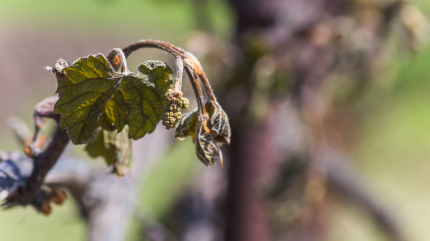
A cold snap in Germany has caused “great damage” to several winegrowing regions following higher temperatures in the first half of April, according to a trade body.
Night-time temperatures have been dropping to lows of -5°C in the last two weeks in many winegrowing areas in Germany, Deutsches Weininstitut (DWV) said.
The association said it was too early to assess the extent of the damage but some producers were preparing to lose the majority of their crop.
It added German vines are on average two to four weeks ahead in their development this year due to hot weather in recent months and therefore young budding shoots are freezing, and those that grow back may not be fertile.
In Franconia, “frost damage varies greatly from region to region”, DWV wrote. The Franconian Winegrowers Association expects 50% of the areas throughout the region have been damaged, although to varying degrees.
Wineries in Ipsheim, in the southern Steigerwald area of Bad Kissingen and Karlstadt have been “particularly affected by the persistently frosty temperatures”, where attempts were made to protect the vines with frost candles, according to DWV.
Further north, Eisinger winery Otto Keller in Baden reported 99% damage due to night frost at -2.3°C. The Bischoff winery in Dietlingen estimates an area of around seven hectares was 80% to 90% damaged by the frost.
Another winery, Hessische Bergstraße, has seen “massive damage” in the Groß-Umstadt area in particular, with night-time temperatures of -3.4°C. According to the Eltville wine-growing office, three vineyards around Groß-Umstadt are almost entirely damaged.
Meanwhile, the Mosel region is similarly suffering, with vintner Peter Burens from Saarburg estimating around 70% of his vineyards have been affected.
Just Drinks has contacted DWV for further comment.
Wine production in Germany dropped by almost 4% last year, hit by weather conditions, according to government data.
According to figures from Germany’s Federal Statistical Office (Destatis) wine and must production fell by 3.9% to 8.6m hectolitres in 2023.
The agency blamed last year’s drop on the weather. “Winemakers were faced with challenging harvest conditions, which was one of the factors in lower wine production,” it said.
Earlier this year, Germany recorded an increase in the value of its wine exports in 2023 but volumes fell, data from the German Wine Institute (DWI) indicated.
The value of German wine exports sat at €384m in 2023, up 4% year-on-year.
However, export volumes were down 2% at 1.15 million hectolitres.


